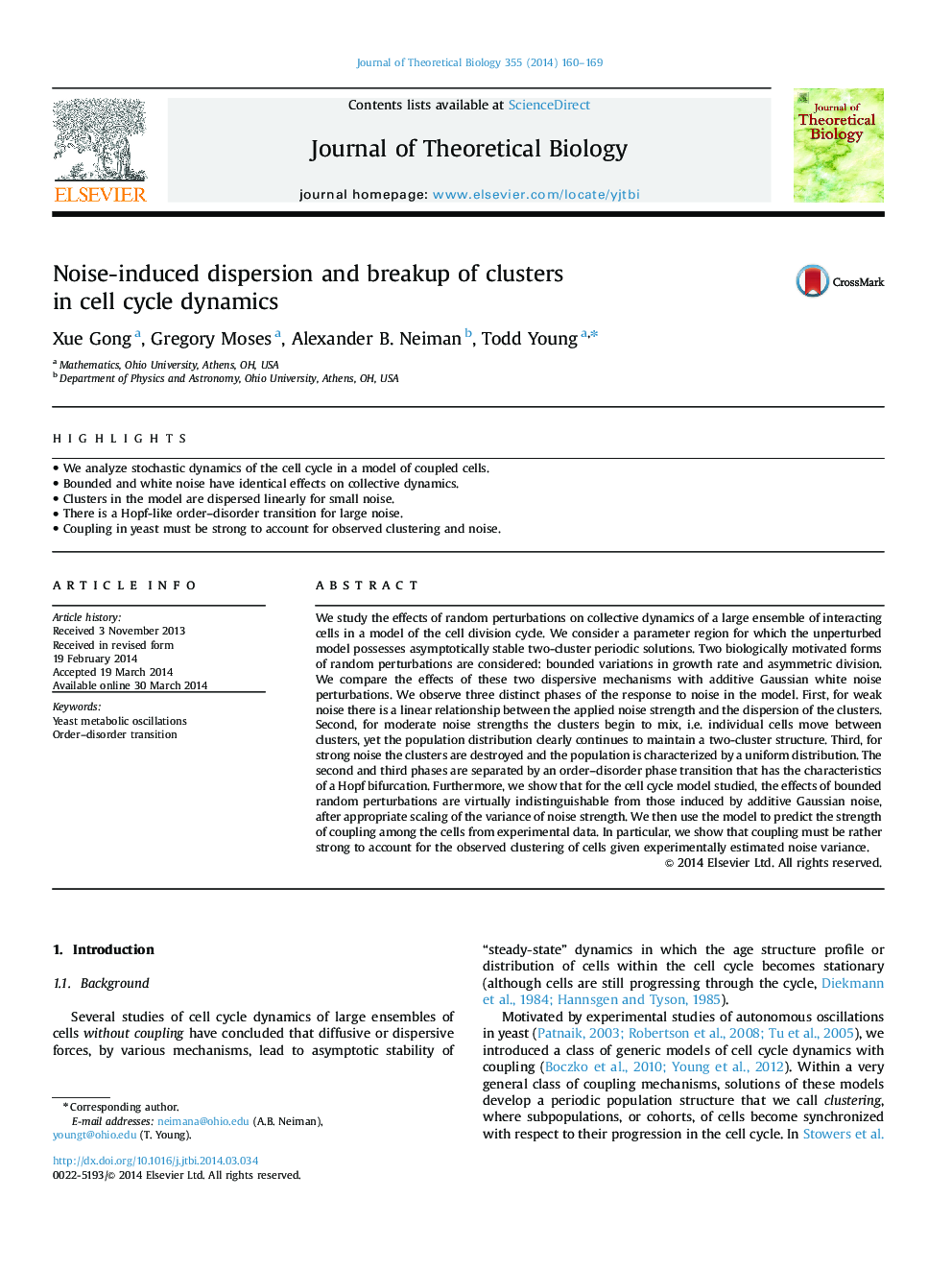| Article ID | Journal | Published Year | Pages | File Type |
|---|---|---|---|---|
| 6370502 | Journal of Theoretical Biology | 2014 | 10 Pages |
Abstract
We study the effects of random perturbations on collective dynamics of a large ensemble of interacting cells in a model of the cell division cycle. We consider a parameter region for which the unperturbed model possesses asymptotically stable two-cluster periodic solutions. Two biologically motivated forms of random perturbations are considered: bounded variations in growth rate and asymmetric division. We compare the effects of these two dispersive mechanisms with additive Gaussian white noise perturbations. We observe three distinct phases of the response to noise in the model. First, for weak noise there is a linear relationship between the applied noise strength and the dispersion of the clusters. Second, for moderate noise strengths the clusters begin to mix, i.e. individual cells move between clusters, yet the population distribution clearly continues to maintain a two-cluster structure. Third, for strong noise the clusters are destroyed and the population is characterized by a uniform distribution. The second and third phases are separated by an order-disorder phase transition that has the characteristics of a Hopf bifurcation. Furthermore, we show that for the cell cycle model studied, the effects of bounded random perturbations are virtually indistinguishable from those induced by additive Gaussian noise, after appropriate scaling of the variance of noise strength. We then use the model to predict the strength of coupling among the cells from experimental data. In particular, we show that coupling must be rather strong to account for the observed clustering of cells given experimentally estimated noise variance.
Keywords
Related Topics
Life Sciences
Agricultural and Biological Sciences
Agricultural and Biological Sciences (General)
Authors
Xue Gong, Gregory Moses, Alexander B. Neiman, Todd Young,
